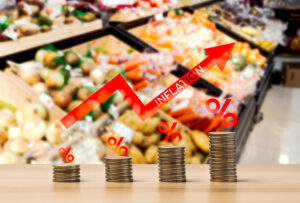
Consumer Prices Climbed 3.2% in February as 2% Goal Remains Elusive
The comments below are an edited and abridged synopsis of an article by Rob Wile
Inflation: First came the acceleration in price growth post-Covid, when the 12-month inflation rate surged from -1% in June 2020 to more than 9% in June 2022. Then price growth slowed over the next 12 months to just 3.1% in June 2023.

A new chapter has emerged: a stall. For the past nine months, the annual rate of (US) inflation has held between 3% and 4%.
On a month-over-month basis, prices climbed 0.4% in February compared to 0.3% in January, in line with expectations. But the core reading, which excludes food and energy prices, came in at 0.4%, above expectations, for a reading of 0.3%.
Experts warned last year that the last mile of the marathon toward the 2% goal would be the hardest. It appears those fears have been borne out.
The biggest hurdle has been getting shelter costs to come down. Those costs come in two main categories: rent and homeownership, called owners-equivalent rent.
Both categories have spent months defying forecasts of a meaningful slowdown in price growth, remaining above 6% on a 12-month basis in January.
Some of the data about the strength of the economy is conflicting. A recent employment report showed that, while the economy continued to add jobs, the unemployment rate ticked upward.
Instead of the anticipated soft landing, in which inflation continues to fall without a significant increase in unemployment, we are now looking at a no-landing scenario, which means that inflation is here for some time.
Workers are barely managing, with wages having only marginally outpaced inflation. Today, inflation-adjusted weekly earnings total about $371, compared with $367 prior to the pandemic.
For the Fed, raising interest rates without setting off an unemployment crisis means rates are likely to remain high, as it sees greater risk from rising prices compared to rising unemployment.
Fed Chair Jay Powell said the first rate cut of the post-pandemic period would most likely come this year, but he could not say when, given ongoing inflationary pressures.
Others see a global economic situation that could keep the US at 3% inflation indefinitely. Ongoing geopolitical turmoil and demand for defense spending will keep the pace of price growth firm.
